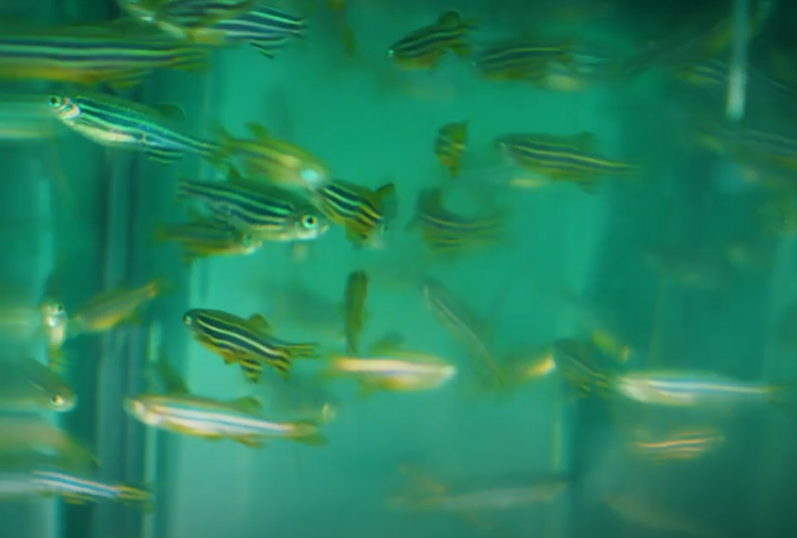Researcher Makes Transparent Zebrafish Glow to Study Melanoma
To study the role of lipid droplets in cancer in a live organism, an ACS physician scientist genetically altered zebrafish to make the droplets fluorescent.
The Challenge
Fat molecules called lipids are a source of energy in most types of cells, but they can also damage cells if they’re too many of them. Cells guard against such toxicity by safely storing lipids inside specialized compartments (organelles) called lipid droplets. These droplets help meet the cell’s need for energy by controlling when lipids are released and stored.
Lipids and lipid droplets also play a role in cancer cells.
Studying lipid droplets poses many challenges because they rapidly change size in response to the cell’s demand for energy. In the past, researchers have only been able to study them in fixed tissues on a slide under a microscope. That gives only a snapshot of information without seeing how lipid droplets work over time.
For researchers to better understand how lipid droplets change in cancer cells, they need to observe them live and in real-time.
The Research
American Cancer Society research grantee Richard White, MD, PhD, along with his students Dianne Lumaquin and Elenor Johns created a way to visually track lipid droplets using zebrafish. These same fish you might see in a home aquarium are not only transparent, making biological functions easy to see. But their fat tissue is also very similar to fat tissue in humans.
“It’s hard to know when cancers start. It’s really hard to know when cancers spread to other places. The first advantage of using zebrafish to study cancer is their transparency, letting us see what’s happening inside them with unprecedented detail. With melanoma, we can see tumors growing beneath the fish’s scales. Zebrafish are also cheap, easy to genetically engineer, and they get cancer in the wild, with mechanisms that are similar to those in humans.”
Richard White, MD, PhD
Memorial Sloan-Kettering Cancer Center in New York City
ACS Grantee

To better see the lipid droplets in action, White’s lab team genetically engineered zebrafish so that a key protein in lipid droplets would carry a fluorescent tag. With it, the zebrafish’s lipid droplets became strongly fluorescent and could be tracked over time under a microscope while the fish were lightly anesthetized.
The researchers first used these genetically modified fish to watch changes in the lipid droplets in response to what the fish ate. His team found that extra food made the droplets get bigger, and a scarce diet made them shrink.
Then they used the fish’s glow to screen for compounds that could make fat cells release lipids. They discovered that drugs affecting nitric oxide could adjust the size of lipid droplets in both normal fat cells and in melanoma cells. That’s important because lipid transfer between neighboring fat cells and cancer cells has been linked to the progression of cancer. Melanoma cells growing near fat molecules take up lipids and then form lipid droplets, which helps them grow.
Why It Matters
White and his lab colleagues have developed and validated a powerful tool for studying the real-time behavior of lipid droplets and their responses to different stimuli in the same living organism over time.
Their work with zebrafish illuminates the complexity of lipid regulation in a relevant cancer model system and paves the way for investigating these processes in melanoma, as well as other types of cancer.

ACS grantee and clinical researcher, Richard White, MD, PhD, explains why his lab zebrafish uses zebrafish to study cancer. Video by Memorial Sloan-Kettering Cancer Center


